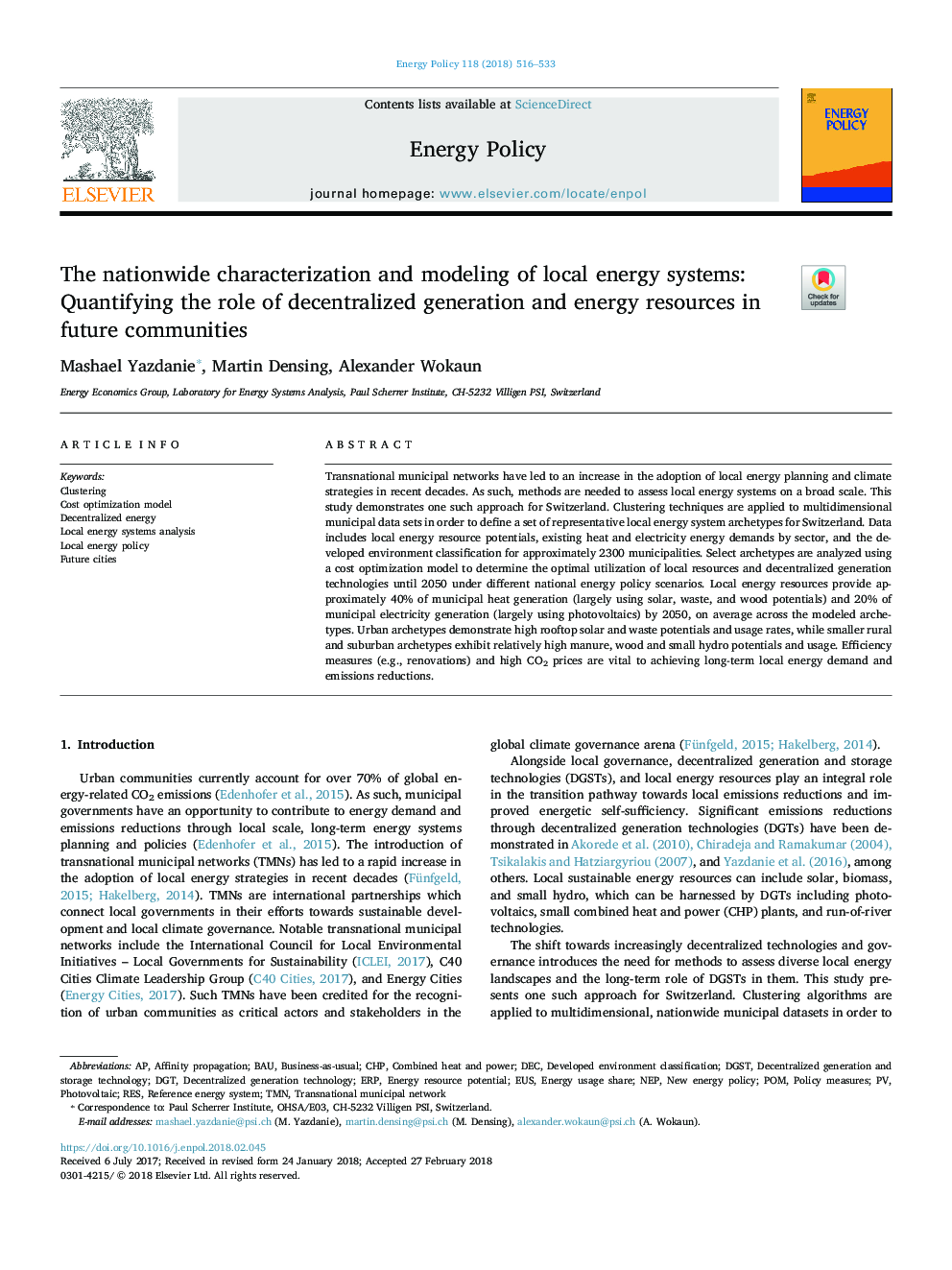| Article ID | Journal | Published Year | Pages | File Type |
|---|---|---|---|---|
| 7396973 | Energy Policy | 2018 | 18 Pages |
Abstract
Transnational municipal networks have led to an increase in the adoption of local energy planning and climate strategies in recent decades. As such, methods are needed to assess local energy systems on a broad scale. This study demonstrates one such approach for Switzerland. Clustering techniques are applied to multidimensional municipal data sets in order to define a set of representative local energy system archetypes for Switzerland. Data includes local energy resource potentials, existing heat and electricity energy demands by sector, and the developed environment classification for approximately 2300 municipalities. Select archetypes are analyzed using a cost optimization model to determine the optimal utilization of local resources and decentralized generation technologies until 2050 under different national energy policy scenarios. Local energy resources provide approximately 40% of municipal heat generation (largely using solar, waste, and wood potentials) and 20% of municipal electricity generation (largely using photovoltaics) by 2050, on average across the modeled archetypes. Urban archetypes demonstrate high rooftop solar and waste potentials and usage rates, while smaller rural and suburban archetypes exhibit relatively high manure, wood and small hydro potentials and usage. Efficiency measures (e.g., renovations) and high CO2 prices are vital to achieving long-term local energy demand and emissions reductions.
Keywords
Related Topics
Physical Sciences and Engineering
Energy
Energy Engineering and Power Technology
Authors
Mashael Yazdanie, Martin Densing, Alexander Wokaun,
